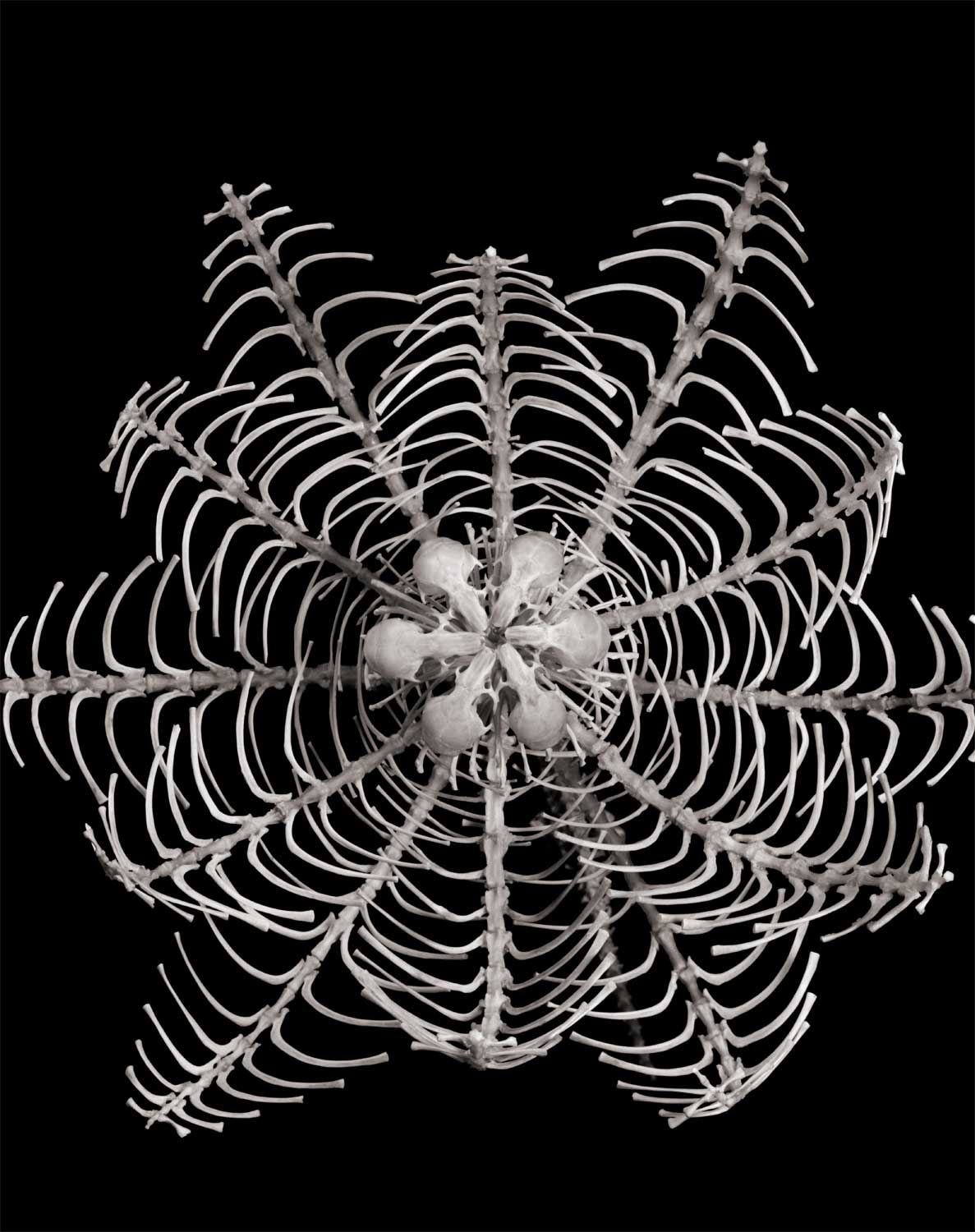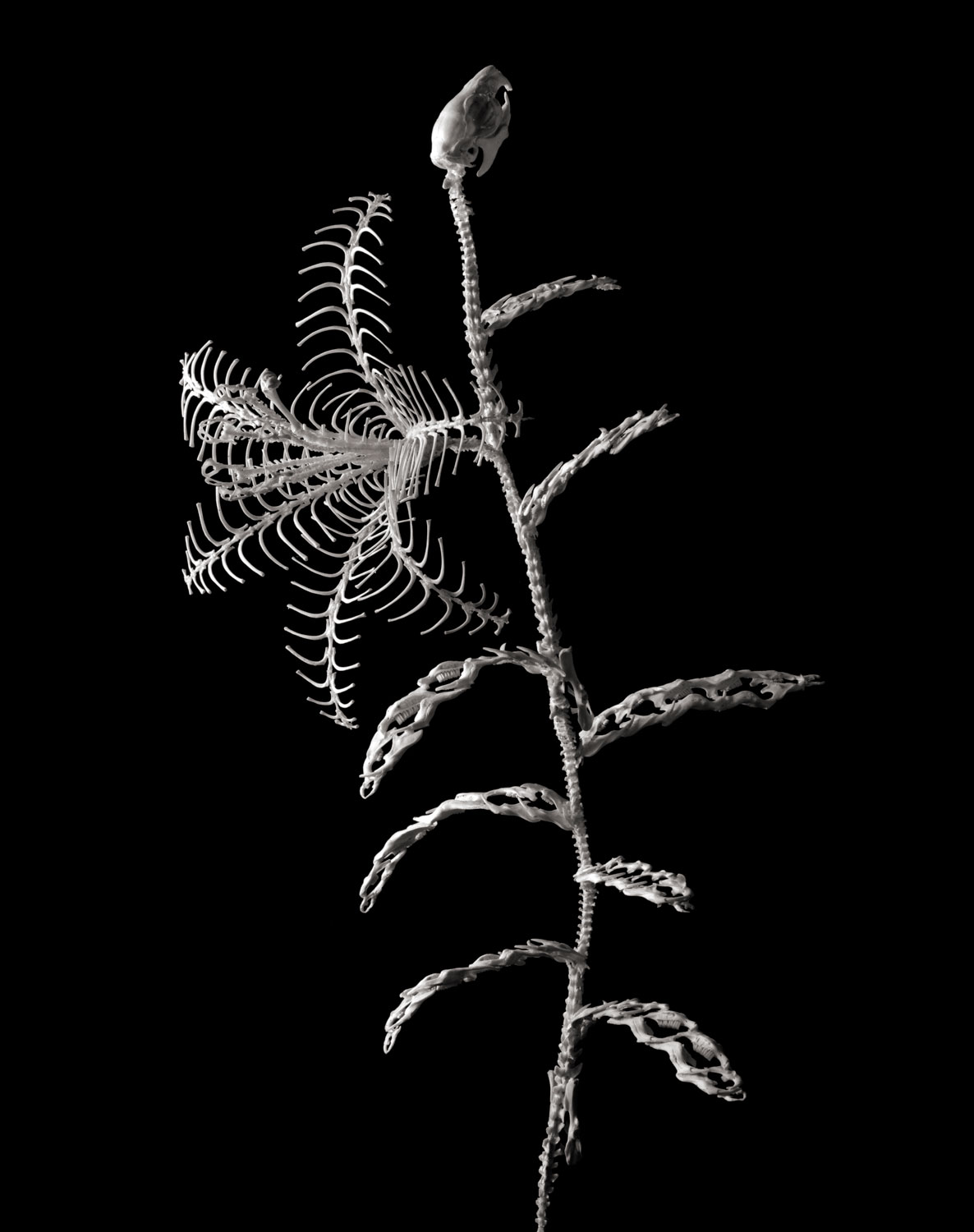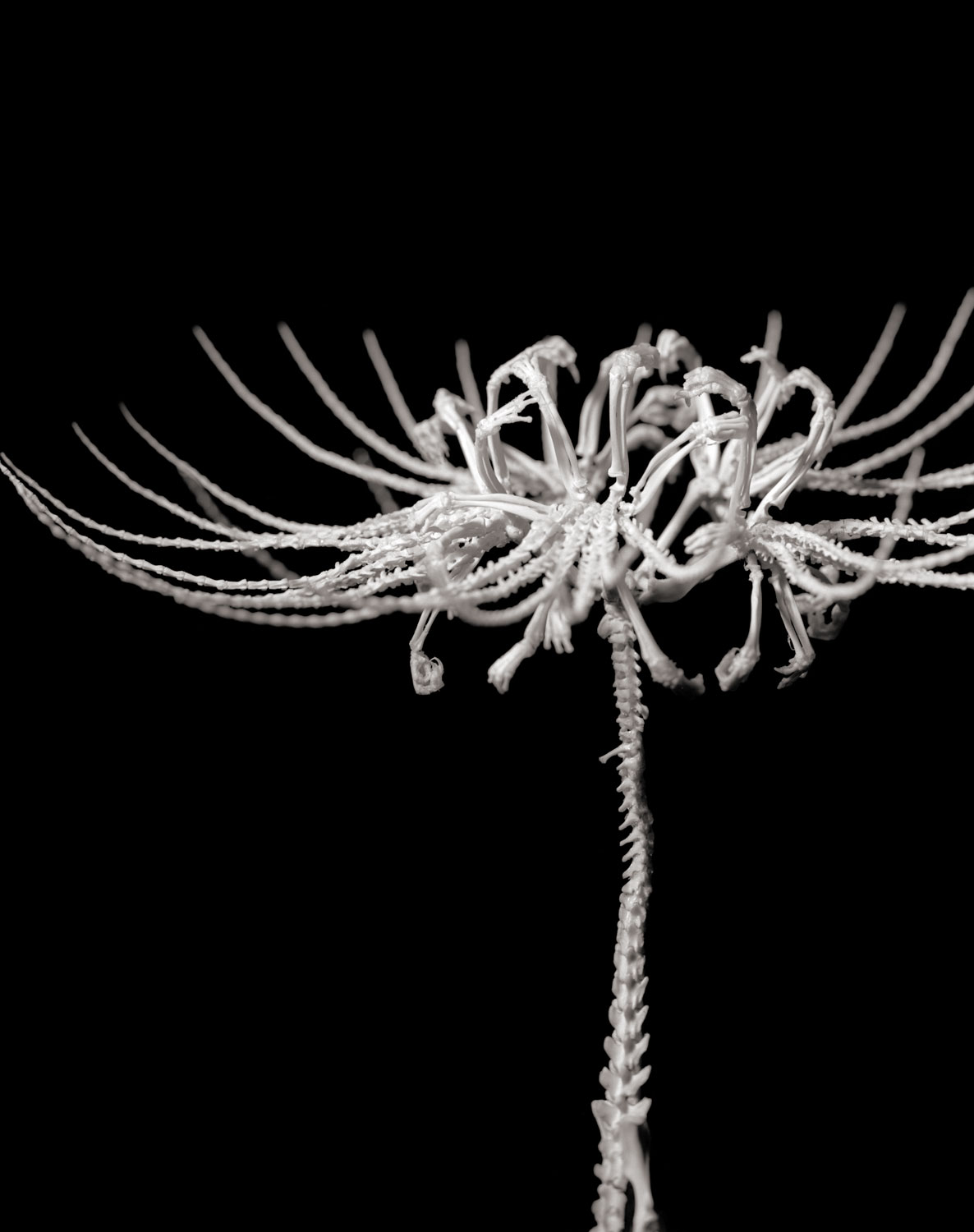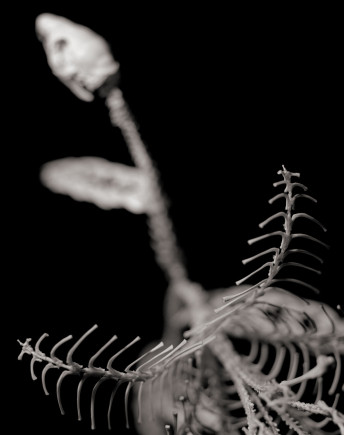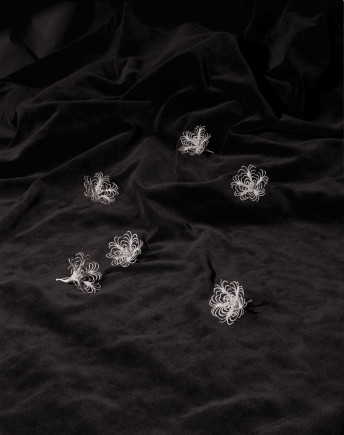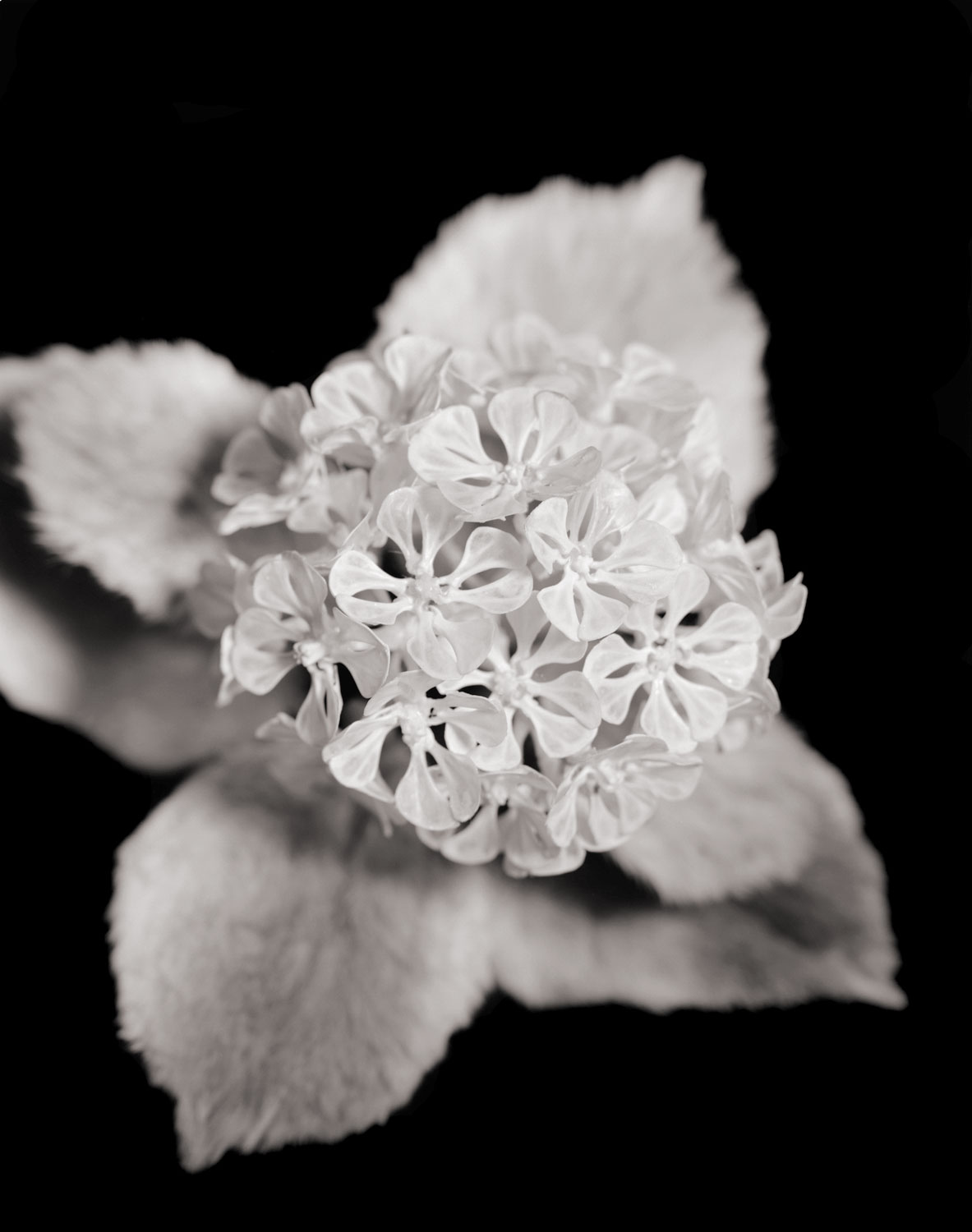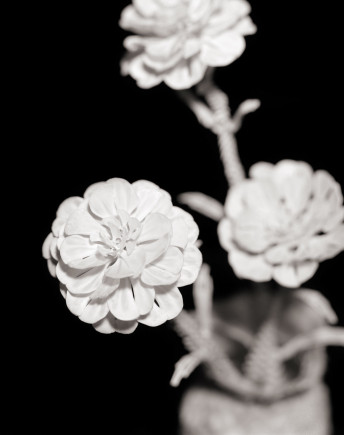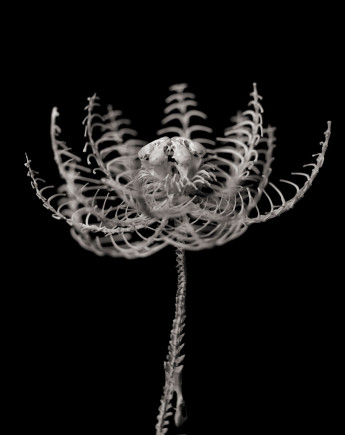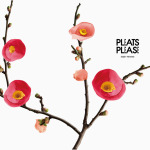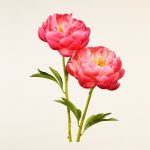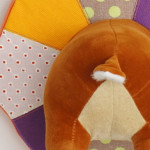One day on his way home, Hideki Tokushige found a dead raccoon lying on his street. Contrary to what most of us would do – avoid it like the plague – he picked it up, took it home and removed its bones. This, says Tokushige, an artist originally trained in photography, was how he began creating floral sculptures using dead animal bones and skin.
“We’ve been creating paintings and sculptures for over 70,000 years and our relationship to bones is just as old,” explains Tokushige. “Everything around us – clothes, nuclear power plants, internet – can be traced back to the structure of bones.” Tokushige began to take an interest in our inherent connection to bones, but also the relationship between death and flowers, which has an equally long history of being associated with one another. When Neanderthal bones were excavated scientists discovered traces of pollen around the bones, indicating that even back then flowers were used to celebrate the deceased. “We don’t come in contact with bones anymore,” says Tokushige. “And yet we all will one day become bones and return to the earth. Perhaps by returning to a fundamental state of mind and contemplating bones we can learn something about ourselves.”
After photographing his sculptures Tokushige returns the bones to the earth.
We saw how flowers can be used to create bones. It’s interesting to see it the other way around.
*all quotes translated by the author
Source: colossal

